What Is A Cash Flow Statement And How To Read It
Understanding your company’s cash flow statement is indispensable to getting your company finances in order. It tells you how much money goes in and out of your business. Your company’s cash flow statement, the balance sheet and the income statement together will give you a holistic view of your company’s financial profile.
What is Cash Flow Statement?
A cash flow statement means a crucial financial document that shows how much money enters and leaves a business over a given time period. It offers vital insights into the company’s financial health and cash management by giving a thorough summary of the cash inflows, outflows, and net changes. This statement describes the sources and uses of cash within each of the three major categories—operating activities, investing activities, and financing activities. Investors, creditors, and analysts can evaluate a company’s capacity to create cash, satisfy its financial obligations, and maintain operations by looking at their cash flow statement.
Importance of Cash Flow Statements in Financial Analysis
While income statements and balance sheets are commonly used, cash flow statements play a pivotal role in providing a comprehensive view of a company’s cash flows. Here’s why a cash flow statement in financial analysis is important:
Evaluating Liquidity
One of the primary purposes of a cash flow statement is to assess a company’s liquidity. By analyzing the cash flows from operating activities, investors and lenders can determine if a company has sufficient cash inflows to cover its day-to-day expenses and short-term obligations. A positive cash flow from operations indicates that the company’s core operations are generating enough cash to sustain its business activities.
Assessing Financial Health
Cash flow statements provide valuable insights into a company’s financial health. By examining the cash flows from investing and financing activities, analysts can identify potential risks and opportunities. For example, negative cash flows from investing activities may indicate heavy investments in long-term assets, while negative cash flows from financing activities may suggest a reliance on debt financing.
Predicting Future Performance
Cash flow statements also help in predicting a company’s future performance. By examining trends in cash flows over time, analysts can assess the company’s ability to generate consistent cash flows and project its future financial position. Positive and growing cash flows indicate a healthy and sustainable business, while declining or negative cash flows may be a cause for concern.
Structure of a Cash Flow Statement
A cash flow statement is a report of sorts that tells you how much money your company has in hand or its liquidity. There are three sections in the ce cash flow statement, which include:
Operations Costs + Asset Investments + Financing Actvities= Available Cash
Operations Costs
Operating activities encompass cash flows generated from a company’s core operations. This section includes cash inflows from sales, payments received from customers, and cash outflows for expenses like salaries, supplier payments, and taxes. Additionally, changes in working capital, such as accounts receivable and accounts payable, are also considered.
Asset Investments
Investing activities relate to cash flows associated with long-term investments. This section includes cash inflows from the sale of assets or investments, as well as cash outflows for the purchase of property, plant, and equipment, acquisitions of other businesses, and investments in securities.
Financing Activities
Financing activities involve cash flows related to financing the company’s operations and growth. This section includes cash inflows from issuing stocks or bonds, receiving loans, and receiving cash from shareholders. Cash outflows consist of dividend payments, share repurchases, debt repayments, and interest payments.
Cash Flow Statement Limitations
Although cash flow statements are valuable tools for financial analysis, they do have limitations. For example, they do not provide information about the profitability or growth potential of a company. Additionally, cash flow statements are based on historical data and may not capture future cash flow fluctuations accurately.
Tips for Interpreting Cash Flow Statements
To make the most out of cash flow statements, it’s essential to consider the following tips:
- Compare cash flow statements over multiple periods to identify trends and patterns.
- Pay attention to the composition of cash flows and identify any significant changes.
- Benchmark a company’s cash flow ratios against industry peers to gain a comparative perspective.
- Consider the company’s overall financial strategy and objectives when interpreting cash flows.
- Look for any non-recurring or extraordinary items that might affect cash flow patterns.
Common Mistakes to Avoid in Cash Flow Analysis
When analyzing cash flow statements, it’s important to avoid common mistakes that can lead to misinterpretation. Some common mistakes to avoid include:
- Focusing solely on net income without considering cash flows.
- Ignoring non-cash items, such as depreciation and changes in working capital.
- Neglecting to assess the quality and sustainability of cash flows.
- Failing to consider the industry-specific factors that influence cash flow patterns.
- Relying solely on one financial statement without considering the complete financial picture.
Cash Flow Statement Example
For the year ended December 31, 20XX
Cash Flows from Operating Activities | |
Cash receipts from customers | 500,000 |
Cash paid to suppliers and employees | 350,000) |
Cash paid for operating expenses | (100,000) |
Net cash provided by operating activities | 50,000 |
Cash Flows from Investing Activities | |
Cash received from sale of assets | 30,000 |
Cash paid for purchase of new assets | (20,000) |
Net cash provided by (used in) investing activities | 10,000 |
Cash Flows from Financing Activities | |
Cash received from issuance of debt | 100,000 |
Cash received from issuance of equity | 50,000 |
Cash paid for debt repayment | (20,000) |
Cash paid for dividend distribution | (10,000) |
Net cash provided by (used in) financing activities | 120,000 |
Net Increase (Decrease) in Cash | 180,000 |
Cash at Beginning of Year | 50,000 |
Cash at End of Year | 230,000 |
This example cash flow statement for a company demonstrates the breakdown of cash flows from operating, investing, and financing activities.
In the operating activities section, the company received 500,000 in cash from customers. It paid 350,000 to suppliers and employees and 100,000 for operating expenses. The net cash provided by operating activities is 50,000.
In the investing activities section, the company received 30,000 from the sale of assets and paid 20,000 for the purchase of new assets. The net cash provided by investing activities is 10,000.
In the financing activities section, the company received 100,000 from the issuance of debt and 50,000 from the issuance of equity. It paid 20,000 for debt repayment and 10,000 for dividend distribution. The net cash provided by financing activities is 120,000.
The net increase (decrease) in cash is calculated by summing the net cash provided by operating, investing, and financing activities, resulting in a net increase of 180,000 in cash.
The cash at the beginning of the year was 50,000, and after accounting for the net increase in cash, the cash at the end of the year is 230,000.
This example cash flow statement provides a clear overview of how cash flows in and out of XYZ Company during the given year, demonstrating the company’s ability to generate positive cash flow and manage its cash position effectively.
Common Terms Seen in Cash Flow Statements
Accounts receivable (A/R): The money your business is yet to receive from customers for goods and services that they purchased on credit.
Accounts payable (A/P): The amount you need to pay creditors for purchasing goods and other operational equipment.
Current assets: Refers to all your inventory, cash, work in progress, and receivables that will last or be used within a year.
Depreciation expense: The expense incurred when an asset stops contributing to the profit of your business
Inventories: Your business’s current inventory amount.
Long-term debt: Debts that are due for payment in a year or later.
Net cash balance: Total cash deposited – Cash disbursements
Net income: In simple terms, Total revenue – Business costs = Net income
Other current liabilities: Any debt that is not covered under common liabilities
Short-term notes payable: Debt due in a short time period, usually in less than a year.
Once you’ve read this, you could also look at some of the cash flow statements available on the internet to gain an understanding of how it works. This will help you understand your business’s cash flow statement effortlessly. We hope this article will help you manage your company’s finances better!




